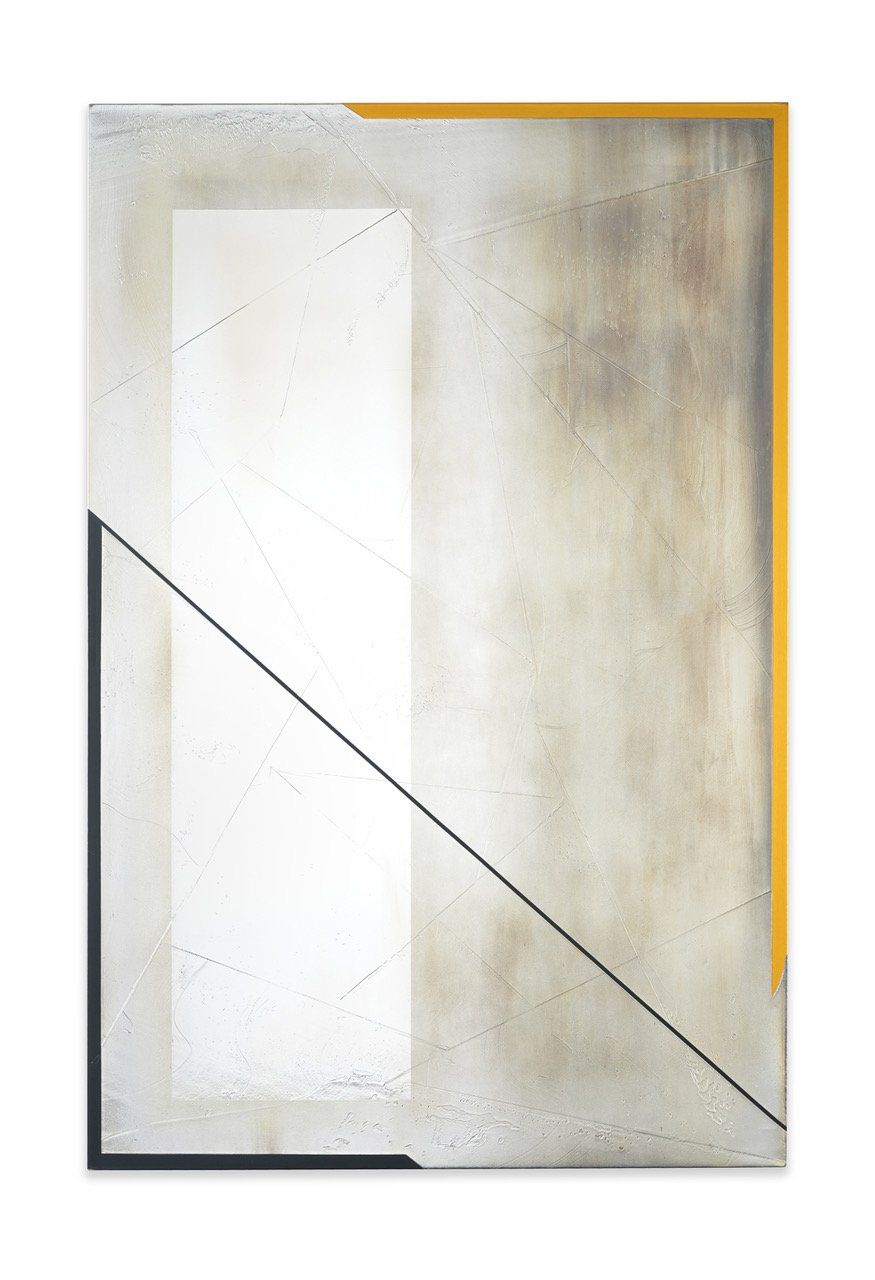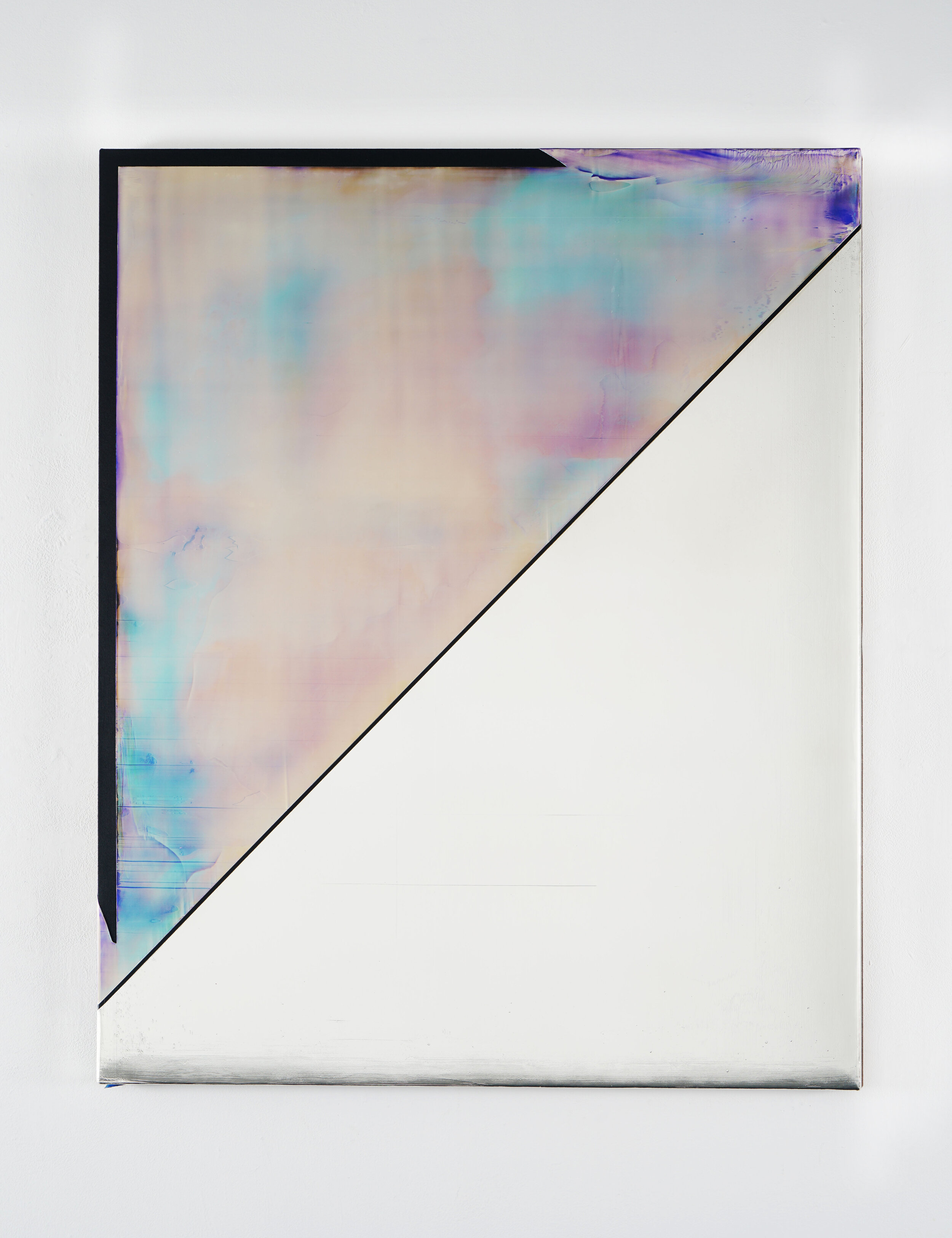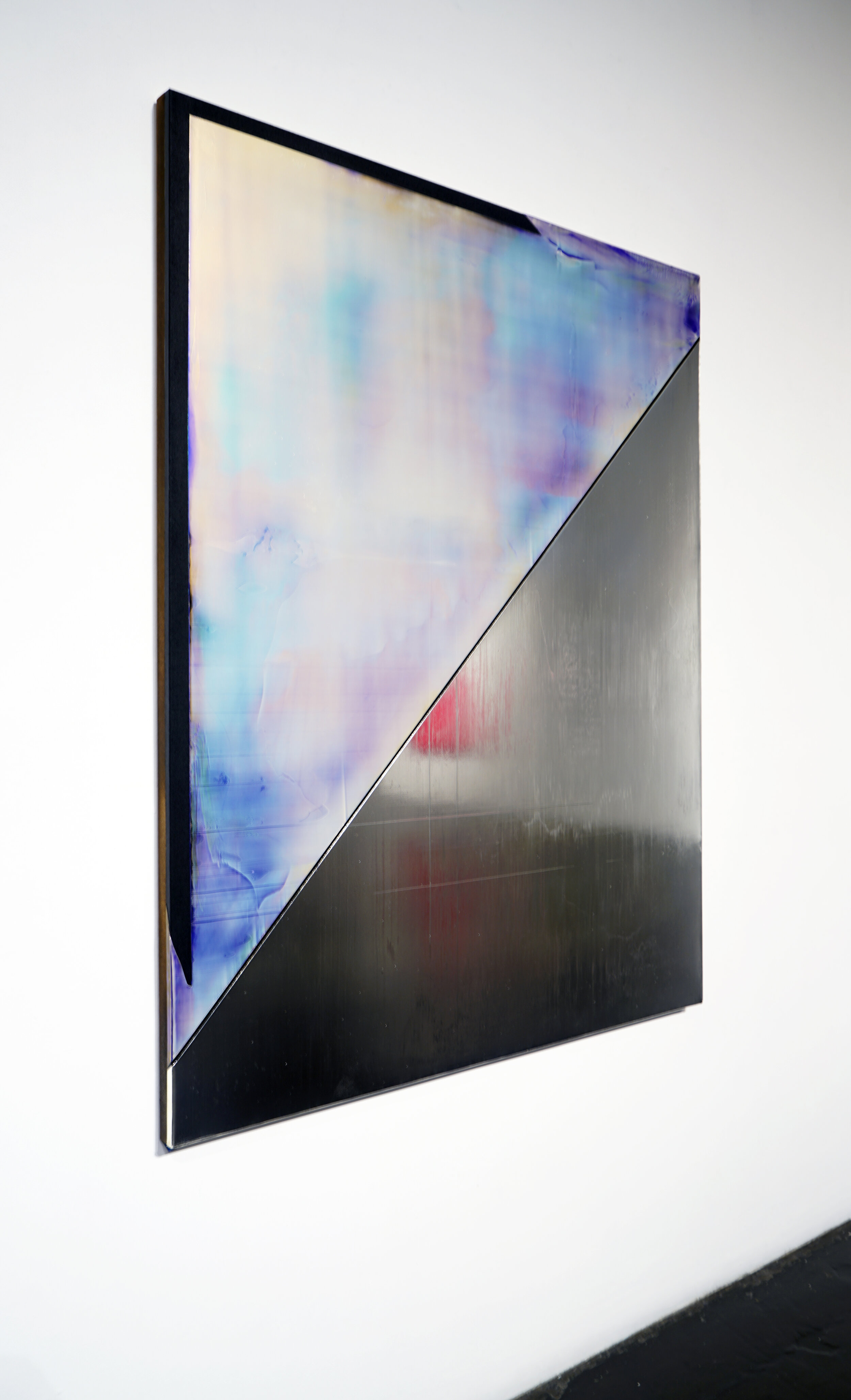JIMI GLEASON
With its bright, elegant, and transformative qualities, Jimi Gleason’s art invites curiosity and contemplation—changing depending on its setting and the environment in which it is displayed. The abstract nature of his work prompts an immediate reaction, drawing viewers into a space where interior and exterior realms collide.
Layering is an integral step to Gleason’s art process: he starts by dissolving a solid bar of silver in concentrated nitric acid. Once the nitric acid has evaporated, the compound element, silver nitrate – a white, powdery solid – is what remains. This silver nitrate is mixed with sodium hydroxide to create silver oxide, which is dissolved in ammonium to create a compound, which Gleason applies to the surface of his canvases with an airbrush. This industrial coating method is highly toxic, and physically demanding in its labor, characteristic of West Coast Minimalist’s and the Light & Space movement’s interests in exploring industrial materials and processes.
The effect of all the layers of silver is a highly reflective surface that turns the painting into a portal into a hazy, bright, alternate dimension. Gleason’s larger scale paintings in particular feel like doors that the viewer could fall through into the world on the other side of the canvas. These interior and exterior worlds of the canvas are linked by a delicate chain of murky resemblance. The scale of Gleason’s paintings makes this resemblance visceral and intuitive.
Growing up in Southern California, with frequent trips to Hawaii, Gleason’s upbringing profoundly influenced his artistic vision. The bright colors of Southern California and Hawaii make their way into his art, accentuating the silver. The colors are bold, undiluted, calling to mind hyper-saturated bromeliad flowers, birds of paradise, and hibiscus. This dynamic use of color reinforces his connection to the natural world and intuitive creative process.
The bold geometry and hard lines in Jimi Gleason’s work juxtapose with the more organic nature of the silver, creating a tension between the artificial and the elemental. This technique places Gleason’s art in conversation with other artists who have similarly merged the inorganic with the organic: Frank Stella, who used hard edge abstraction to depict natural phenomena (notably, stars) and Frank Ghery, who designed iconic steel buildings that ineffably capture the feeling of wind and air.
Born in Newport Beach, CA, Gleason received his BA from UC Berkeley in 1985. He studied printmaking at the San Francisco Art Institute before relocating to New York City, where he worked as a photo assistant and photo technician. Returning to California, Gleason was employed in the studio of Ed Moses for five years. Combining the disparate technical and compositional skills developed during his exposure to printmaking, photography and mixed-media painting, Gleason is now the subject of considerable curatorial and critical applause.
Jimi Gleason’s work has been widely exhibited and collected by major institutions including: the Hammer Museum, Frederick R. Weisman Foundation, the Long Beach Museum of Art, the Seattle Art Museum, and the Tucson Museum of Art. Additionally, the artist’s paintings are held in a number of significant public and private collections around the world.
EXHIBITIONS
PRIMA MATERIA
CROSS/REFERENCE
REFLECTED & ABSORBED
SURFACE AND LIGHT
Jimi Gleason: NEW WORKS
SILVER LIGHT
STRATA
MEDIA
INCONVERSATION: Jimi Gleason
CROSS/SECTION
REFLECTED & ABSORBED
SURFACE & LIGHT
SELECTED WORKS






























